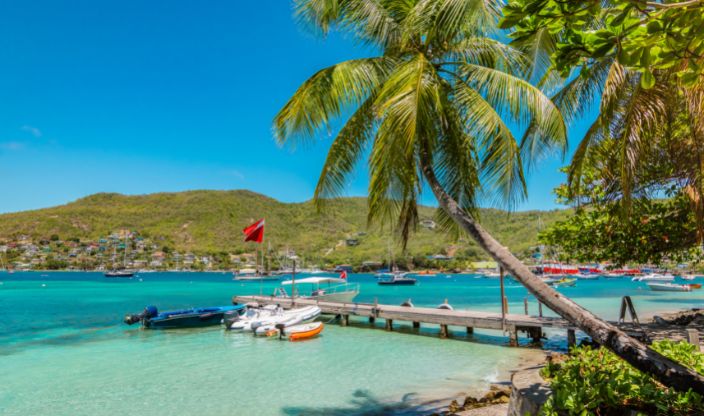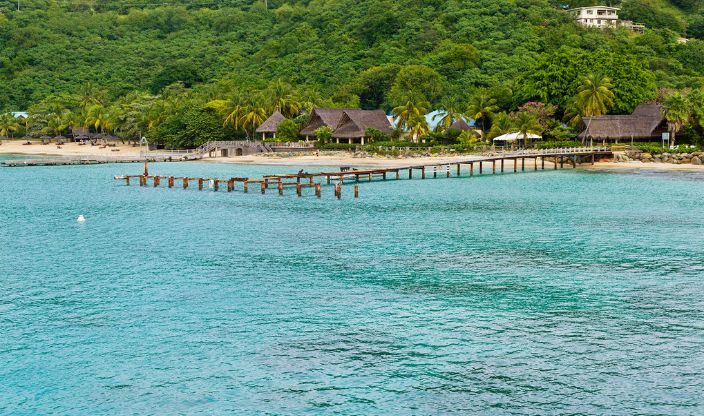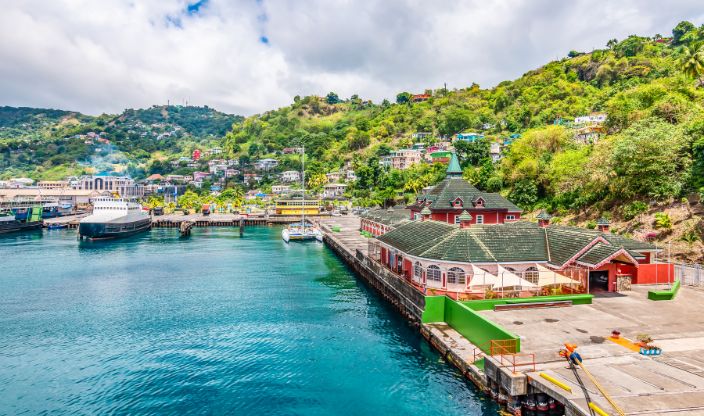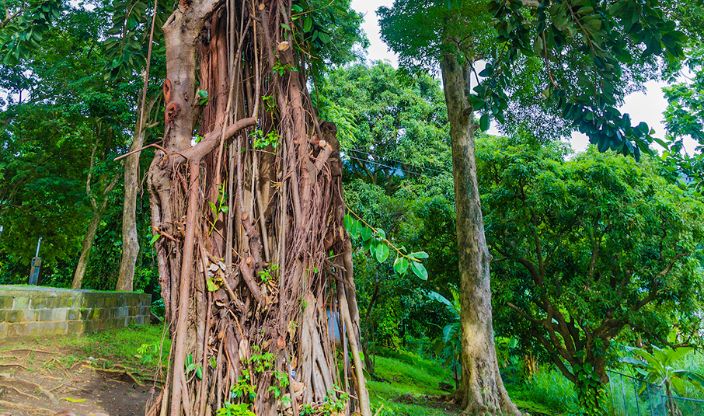Introducing St Vincent and Grenadines
If you are looking for unspoiled beaches and an absolute escape from the everyday, then head to St Vincent and the Grenadines. Soft sands and palm trees swaying welcome you to unwind and take in this untamed corner of the Caribbean. The islands are mostly uninhabited, covered in dense forests and gorgeous sandy beaches. The inhabited islands are home to vibrantly painted fishing communities, bustling markets, and French fort remains. You can choose to rest on the tranquil island of Bequia, where fresh seafood abounds, or relax on Palm Island overlooking the endless ocean, with a refreshing cocktail in hand. The islands are a great spot for diving and snorkelling, especially Tobago Cays Marine Park, with its abundant water sports and marine life.
The Caribbean Sea and the North Atlantic Ocean are home to the group of islands known as St. Vincent and the Grenadines. The islands span 389 sq km (150 sq mi) and extend southward (by about 48 miles) to Grenada and are made up of the larger St. Vincent Island and the northern Grenadine islands, together with about 32 islands and hundreds of islets.
The driest and nicest travel seasons to St. Vincent and the Grenadines are from February through April. The islands do however bask in a warm and tropical climate throughout the year. Every month has around the same number of sunlight hours with highs of around 30°C.
During the hurricane season, which runs from June to November, the rain typically falls in sporadic heavy showers. Due to the islands’ southerly position, hurricanes rarely cause significant damage, however there are intense storms during this time.
The waters nearby and the tropically grown fruits and vegetables are key ingredients in St. Vincent’s gastronomy. Fish, conch, shrimp, lobster, pumpkin, callaloo, oranges, and breadfruit are staple foods of the islands.
Some of their most notable dishes include:
Jackfish and breadfruit: Typically served as lunch, this dish combines fried jackfish with roasted breadfruit. An entire breadfruit is cooked over an open fire with the fish often coated in flour, fried till crisp, having been marinated in lemon juice.
Madongo dumplings: The arrowroot grows naturally on the island and is made with nutmeg and coconut. You can either bake or fry the dumplings.
Callaloo soup: In the Caribbean, this classic soup is made from callaloo leaves, commonly referred to as amaranth, and contains okra, yams, potatoes, chicken, or beef. It is customarily served on Saturdays in St. Vincent.
The Caribs, after whom the area is now named, were the original inhabitants of St. Vincent and the Grenadines. They dubbed St. Vincent Hairouna, which translates to “Land of the Blessed,” and that name is the most popular beer in the country.
By 1719, French colonists from Martinique, nearby, had settled on the island and were cultivating sugar, coffee, tobacco, and other products for export to Europe, where there was a sizable market at the time. By then, the British Empire had established a stronghold in the area, and the French formally surrendered the island to them in 1763. In 1779, the French took back St. Vincent, but the British took it again four years later. As slavery was outlawed in 1834, the plantations were short on labour. St. Vincent experienced issues at the time due to falling prices and a shaky market. Several Portuguese and Indian labourers were brought to the island from the 1840s through the 1890s in an effort to boost production, but events and a shifting world economy would cause the export business to fail. St. Vincent and the Grenadines still depends heavily on agriculture, which is currently dominated by banana cultivation.
The main traditional form of entertainment in this area is provided by steel pan bands, whose cheerful music uplifts the crowd. Calypso, reggae, and soca are some well-liked musical genres in St. Vincent and the Grenadines.
The islands are great if you are looking for a relaxing family holiday. If you enjoy the outdoors you could go hiking. The hiking in St. Vincent is among the greatest in the Caribbean. Start by hiking the Buccament Valley’s Vermont Nature Trails. Absorb the scenery and all the sights in the vicinity of Kingstown.
A great experience for the whole family is to visit Wallilabou Heritage Park, which is one of the best places to visit in the country since it has amazing hiking paths, gorgeous waterfalls, ample tropical vegetation, and amazing wildlife. Another great excursion with the kids is to visit the Old Hegg Turtle Sanctuary. The sanctuary, which is about 2.5 miles by foot from Port Elizabeth, was built to protect hawksbill turtles. You may observe several turtles inside, discover more about their life, and learn about the work the sanctuary is doing to safeguard the turtles.
Recommended St Vincent and Grenadines Specialists
Top Locations in St Vincent and Grenadines













